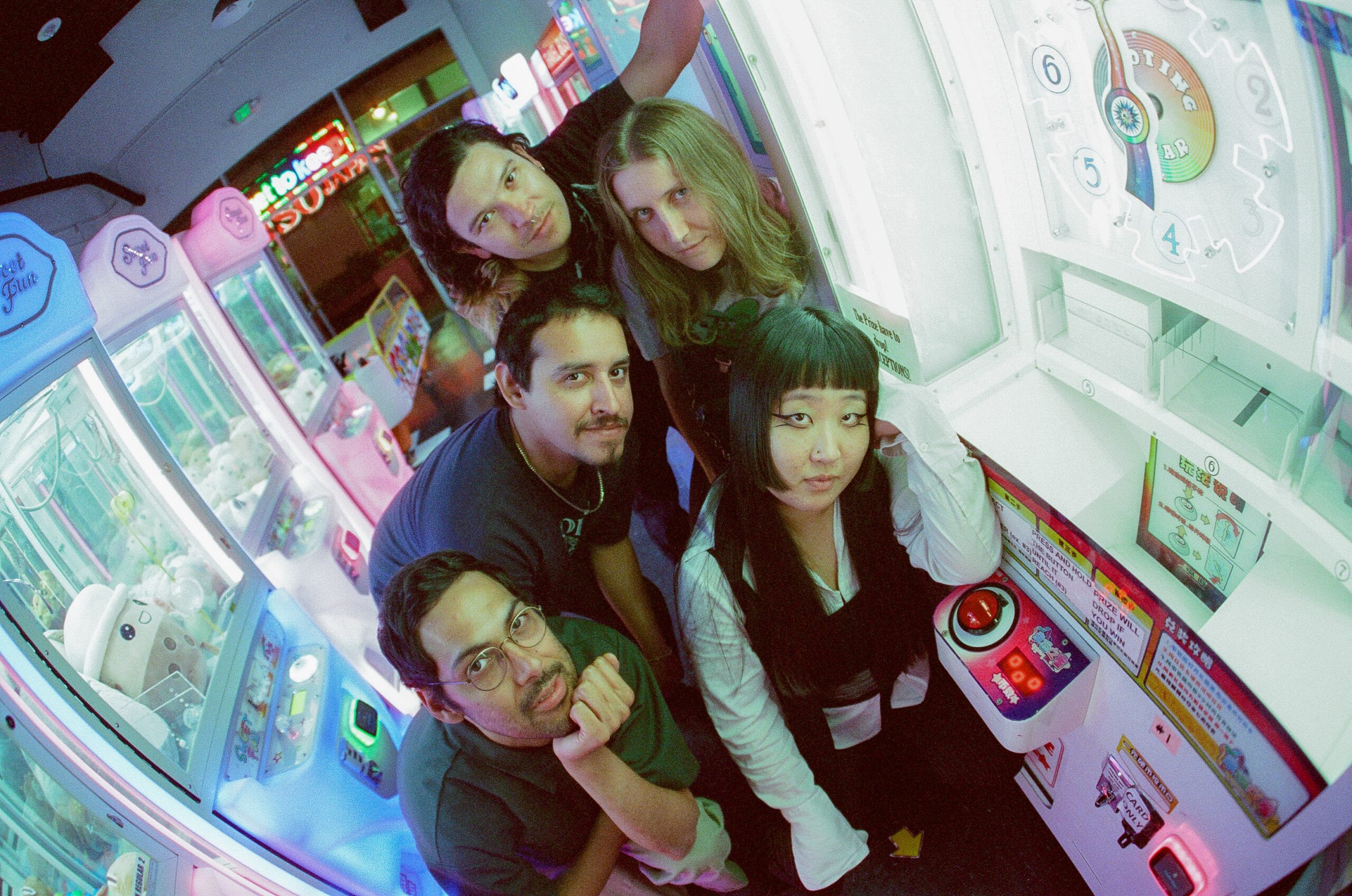Draag’s pinned tweet “not a shoegaze band” reads like Avril Lavigne claiming in a 2003 video that “I’m not punk, I’m just a rock chick” [paraphrased]. Whether or not these artists belong in these categories, denial is a coy way to make the culture put two and two together. It’s not so bad to be considered one of the most enduring genres. Thou doth protest too much, Draag.
not a shoegaze band— Draag (@draagsadpeople) February 15, 2023
Shoegaze is a genre that is sometimes too passive for me, music for the path of least resistance. But even though Draag’s songs are built with that quintessential wall of sound, their instruments and colors are distinguishable from each other rather than blended into a homogenous shoegaze soup. Kaleidoscopic instead of foggy, they are full of angles. Listening to Draag feels more like looking at a multifaceted diamond in a room full of mirrors. Even their name, like the poem “lighght” by Aram Saroyan, seems like a thesis of echoes, refraction, and visceral sensation.
If you ever have a show to catch at Elsewhere make sure to get there early. The band started their opening act to L.A. compatriots Cryogeyser at 7:30 sharp last Saturday. I heard the first song behind the entrance tape and made it inside by song number two, “Mitsuwa.” Ethereal layers of sound in slowcore time made finding a spot in the dark garage-like space feel cinematic. While the venue was a little sweaty and close for comfort, it was good ambience for a band like this, bringing back to life the dream of ‘90s youth. Almost no spotlights were used throughout the show or were turned way down. The band was moodily silhouetted against a backdrop of screens with golden hour hues or neo-noir op art stripes.
“Demonbird” turned the tempo up. A Loveless-esque urgent guitar riff repeated endlessly while liminal space synths scaled up and down. Whoever was on drums rattled off impressively complex patterns that shifted and kept the ear engaged. With the screens strobing in time, you could actually make out the band members—four guys, including frontman Adrian Acosta, and an Asian girl with a cool haircut, keyboardist Jessica Huang. Vocal duties were sometimes shared between these two, as in the particularly gorgeous song “Trauma Kit,” melding into a single androgynous voice and creating a feminine-masculine play that’s forever a hallmark of the genre; see My Bloody Valentine and Slowdive for examples. I always imagine two teens on the phone with each other holding back a lot of feelings. Lyrics were mostly indistinguishable, breathed rather than enunciated, making mumblecore of pop music.
The band kept the act simple and the pace quick until the last song, an unreleased three-parter called “Goldilocks Zone.” Before getting into it, Acosta paused to ask if we could “pretend it’s the ‘90s and jump up and down for this next one.” Asking for a certain reaction is a bold move, but the crowd seemed to agree the music had earned it. Fans in the middle obliged while Acosta screamed into the guitar pickups. At one point he took off his guitar while a roar of feedback looped, compounding noise, and I thought he would crowdsurf—but instead he held the guitar over the audience asking something although there seemed to be some general confusion about what we should be doing. Most people took his cue and screamed right back at the pickups in a final cathartic release on behalf of Draag. The melody we started the song with returned and then resolved, and the set ended. Just six songs, a half hour, and not enough for me.
But lucky for me Draag released a new album in the days following, titled Dark Fire Heresy. I’ve now listened to the whole thing and I keep returning, first to help me write this review and now for the sheer pleasure of it. The benefit of shoegaze or dreampop or whatever categorical term is preferred for Draag’s genre, is that noise and ether get to exist in the same realm. Draag hangs up a chandelier in that realm. Dreamers and stargazers, enter in.























